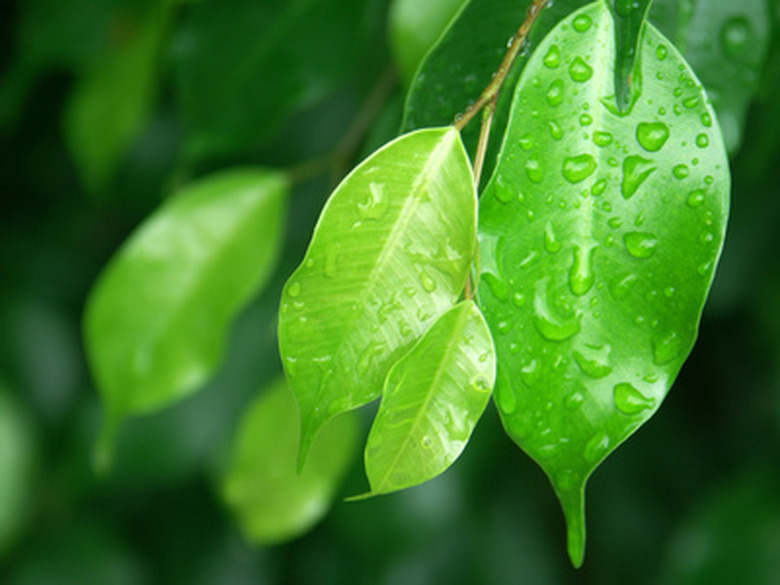The Temperature Requirements Of A Ficus Tree
Ficus trees are warm-weather, tropical trees. Varieties include the fruit-producing fig, the houseplant Ficus benjamina, and the rubber plant. Whether you grow ficus trees in the landscape or in the home, providing the right temperature is vital to prevent damage and ensure good, healthy growth on the tree.
Daytime Temperatures
Daytime Temperatures
The optimum daytime temperature for a ficus is 75 degrees Fahrenheit, but they do well in a range between 65 and 85 F. Temperatures over 85 F cause rapid moisture evaporation, which leads to leaf wilt and drought damage. Cooler temperatures inhibit growth on the ficus, and may also force the tree into dormancy during the wrong season. While these temperatures are maintained in most homes, ficus trees should be planted outdoors only in mild climates that do not have major temperature fluctuations in the summer or long periods of extremely hot or cold weather.
Nighttime Temperatures
Nighttime Temperatures
Ficus trees require lower nighttime temperatures. Optimum night temperatures are between 65 and 75 F, or about 10 degrees lower than the daytime temperatures for the plant. Indoors, keep the ficus away from heat vents that elevate nighttime temperatures in the area of the plant. Heat vents also dry out the foliage and soil, which can damage the ficus. Outdoor ficus trees tolerate colder temperatures as long as there is no tender new growth on the tree.
Frost Concerns
Frost Concerns
While ficus trees are tropical and subtropical, they are relatively frost tolerant while they are dormant in winter. They can withstand short periods of below-freezing temperatures, down to 10 F, but they suffer damage at temperatures that plunge lower than that. Ficus trees are most prone to frost damage during the spring when they begin to leave dormancy and actively grow again. Late-season frost kills the tender new growth and may severely damage the tree.
